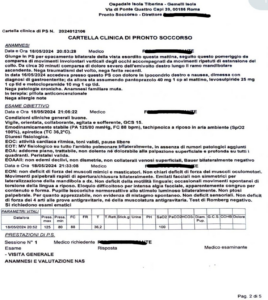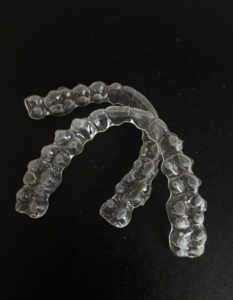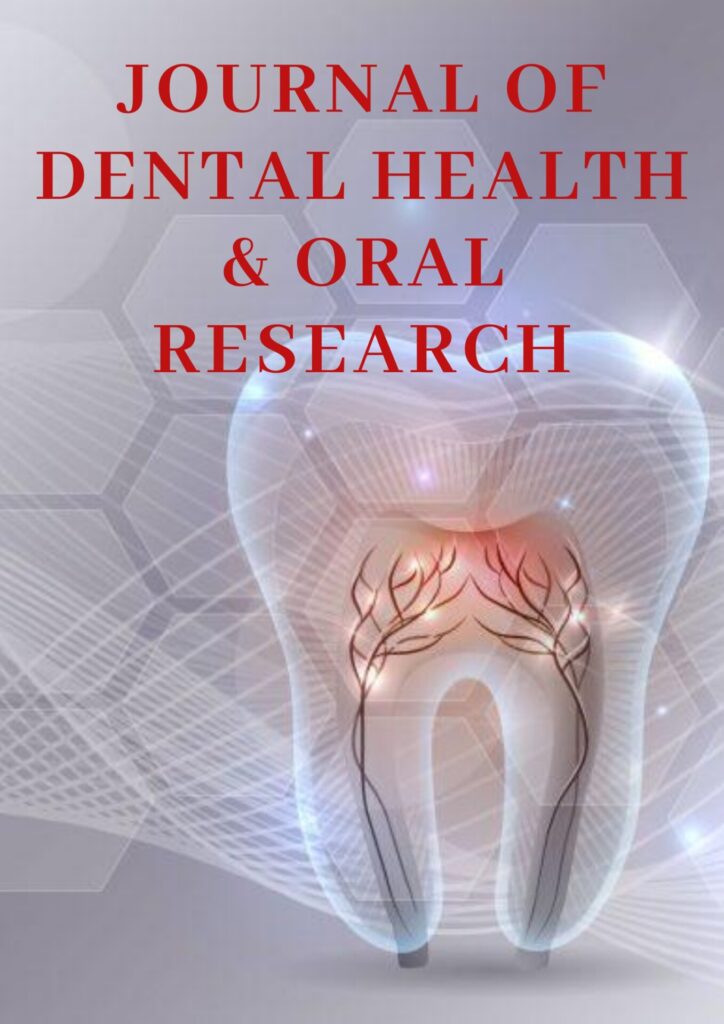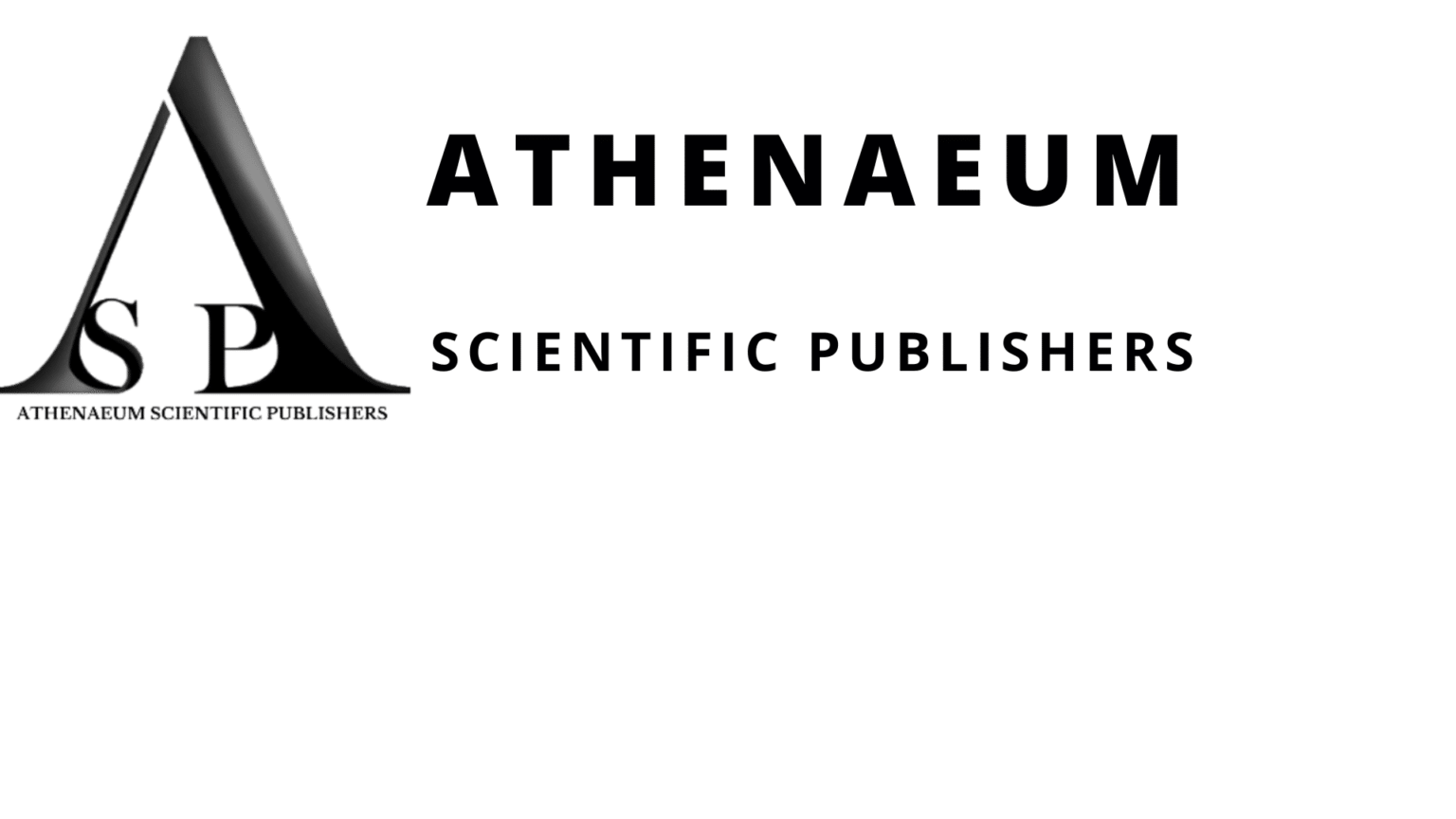Case Report | Vol. 6, Issue 1 | Journal of Dental Health and Oral Research | Open Access |
Extrapyramidal Reactions Induced by Dopamine Antagonists: Clinical Management and the Protective Role of Clear Aligners: A Case Report
Saccomanno Sabina1*, Lucchese Alessandra1,2,3,4, Stella Caldarelli5, Salvati Simon Ettore6, Silenzi Ederli Lorenzo6, Messore Antonella1, Garcia-Godoy Franklin7, Marzo Giuseppe6
1Department of Life Science, Health and Health Professions, Link University, Rome, Italy
2Unit of Orthodontics, School of Dentistry, Vita-Salute San Raffaele University, Milan, Italy
3Unit of Orthodontics, Division of Dentistry, IRCSS Ospedale San Raffaele Scientific Institute, Milan, Italy
4Unit of Dentistry, Research Center for Oral Pathology and Implantology, IRCCS Ospedale San Raffaele Scientific Institute, Milan, Italy
5Psychologist, Private Practice, Italy
6Department of Health, Life and Environmental Science, University of L’Aquila, Piazza Salvatore Tommasi, 67100 L’Aquila, Italy
7Department of Bioscience Research, College of Dentistry, University of Tennessee Health Science Center, Memphis, Tennessee, USA
*Correspondence author: Sabina Saccomanno, Department of Life Science, Health and Health Professions, Link University, Rome, Italy; E-mail: s.saccomanno@unilink.it
Citation: Saccomanno S, et al. Extrapyramidal Reactions Induced by Dopamine Antagonists: Clinical Management and the Protective Role of Clear Aligners: A Case Report. J Dental Health Oral Res. 2025;6(1):1-6.
Copyright© 2025 by Saccomanno S, et al. All rights reserved. This is an open access article distributed under the terms of the Creative Commons Attribution License, which permits unrestricted use, distribution, and reproduction in any medium, provided the original author and source are credited.
| Received 11 March, 2025 | Accepted 25 March, 2025 | Published 01 April, 2025 |
Abstract
Objective: Extrapyramidal Syndrome (EPS) encompasses a range of movement disorders caused by dysfunction of the extrapyramidal system, often as an adverse effect of dopamine antagonist drugs. Severe dystonic reactions can lead to involuntary muscle contractions, posing significant risks to oral health, particularly through traumatic injuries to the dentition and facial structures. This case report explores the protective role of clear aligners in preventing dental trauma during an acute dystonic crisis, highlighting their potential as a preventive measure in at risk patients.
Method: A 25-year-old female patient presented to the emergency room with acute dystonia affecting her facial musculature, characterized by involuntary jaw contractions, blurred vision and severe pain. The episode occurred after recent administration of dopamine antagonists (Levosulpiride and Metoclopramide). Clinical examination, imaging and laboratory tests ruled out other neurological conditions. During the crisis, the patient was wearing invisalign clear aligners, which incidentally provided protection against severe dental trauma. Diazepam was administered as a treatment, leading to symptom resolution.
Results: The patient’s dystonic symptoms resolved completely following diazepam administration. Despite significant involuntary jaw contractions, no dental fractures or soft tissue injuries were observed, likely due to the protective effect of the clear aligners. This case underscores an underrecognized benefit of orthodontic aligners beyond their intended orthodontic function, suggesting their potential role in mitigating dental trauma during EPS-related dystonic crises.
Conclusion: EPS-induced dystonia presents substantial risks to oral health, particularly in patients prone to in-voluntary jaw movements. While occlusal splints are commonly used in managing oromandibular dystonia and bruxism, this case highlights the unexpected protective function of clear aligners in preventing dental injuries. Given the potential severity of EPS-related dystonic episodes, clear aligners could serve as a practical and preventive measure for patients at risk. Future research should explore their role in interdisciplinary approaches to managing EPS-related complications.
Keywords: Extrapyramidal Symptoms; Dystonia; Dopamine Antagonists; Aligner Appliance
Introduction
Extrapyramidal Syndrome (EPS) refers to a range of movement disorders caused by the dysfunction of the extrapyramidal system. This system is a neural network responsible for regulating motor control. It integrates with the pyramidal pathways to modulate and refine motor commands generated by the cortex, regulate involuntary movements and contribute to postural control [1].
EPS often manifests as dystonia, akathisia or Parkinsonism, with symptoms such as involuntary muscle contractions, restlessness and facial rigidity [2].
While EPS is a well-documented adverse effect of antipsychotic medication, its acute onset can have serious consequences, especially when patients experience severe dystonic reactions [3-5]. In such cases, rapid muscle contractions can lead to traumatic injuries, particularly to the dentition and facial structures [6].
In this report, a unique instance of iatrogenic EPS following the administration of dopamine antagonist drugs is described. The patient, a 25-year-old woman, presented with severe dystonia affecting her facial musculature. The patient was wearing Invisalign transparent orthodontic aligners (Align Technology, Tempe, Arizona, US) during the episode, which inadvertently protected her teeth from the potential damage that would have otherwise occurred during the dystonic jaw movements [7].
This fortunate coincidence highlights an interesting and underexplored facet of orthodontic treatment, suggesting that these types of orthodontic appliances may offer an unintended protective benefit in certain acute medical emergencies.
Case Report
A 25-year-old woman presented to the emergency room of the Isola Tiberina Hospital in Rome, Italy, under code red, reporting bilateral blurring of vision, which had begun earlier that day. The patient also experienced involuntary vertical eye movements, repeated neck extension movements and severe pain along the right hemiface, specifically localized to the ascending mandibular ramus. Muscle dystonia caused involuntary contractions of the facial muscles, leading to painful and repetitive twisting of the jaw [8].
During the dystonic crisis, the patient experienced significant difficulty breathing as her tongue twisted inside her throat. Additionally, the patient’s dental arches visibly rubbed against each other due to involuntary jaw contractions. Fortunately, the patient was wearing Invisalign aligners at the time, which protected her teeth from damage caused by the friction during the crisis [9].
A brain CT scan was performed to rule out stroke. The scan, conducted with volumetric technique, revealed no hyperdensities of blood nature in either intra- or extra-axial areas. The ventricular system showed normal amplitude and alignment along the midline. There were no significant skeletal alterations of the cranial theca or splanchnocranium and the patient’s blood tests did not reveal any significant abnormalities [10].
An iatrogenic extrapyramidal crisis was suspected, following the patient’s intake of dopamine antagonist drugs (Levosulpiride and Metoclopramide) within the 48 hours preceding her admission. After the administration of 10 mg of diazepam, the patient’s symptoms completely resolved (Fig. 1,2).
Within the next 24 hours, a follow-up neurological examination was performed. The patient showed improving visual blurring and her pupils were found to be isochoric and isocyclic, with a rapid photomotor reflex. No additional neurological deficits were observed.

Figure 1: Anamnesis of the patient upon arrival at the emergency room of Isola Tiberina Hospital in Rome, Italy. The patient reported bilateral blurred vision, involuntary vertical eye movements, repeated neck extension movements and severe pain along the right mandibular ramus. Prior to admission, the patient had been treated with pantoprazole 40 mg, metoclopramide 10 mg and levosulpiride 25 mg, prescribed for gastrointestinal issues.

Figure 2: Detail of the aligners worn by the patient during the crisis, note the completely abraded incisal edges and occlusal tables.
Discussion
Drug-induced extrapyramidal symptoms are a well-known complication of antipsychotic medication. Sheppard and Merlis reported that between 20% and 40% of patients treated with psychoactive agents, particularly phenothiazines, experience parkinsonism-like symptoms as a side effect [3]. These symptoms can be severe and, in some cases, lead to dangerous motor reactions, such as dystonic crises, which can cause involuntary muscle contractions affecting the face and jaw. These events pose significant risks to oral health, as the intense and involuntary jaw movements can lead to dental trauma, particularly when the teeth are unprotected [11].
Occlusal splints are widely recognized in the therapeutic management of Oromandibular Dystonia (OMD), a condition characterized by involuntary spasms of the masticatory muscles. As noted by Yoshida, occlusal splints can help alleviate muscle spasms and protect the dental arches from the forces generated during these spasms [12].
This protective role of occlusal splints has been well-documented, particularly in cases of dystonia, where they reduce the risk of trauma to the stomatognathic system.
In addition to their role in treating dystonia, occlusal splints are also a primary treatment option for bruxism, a condition characterized by repetitive jaw muscle activity, including teeth grinding. Guaita and Högl highlighted that occlusal splints not only prevented dental damage but also reduced bruxism-related muscle activity during sleep [13].
Bruxism patients who have historically benefited from splint therapy are increasingly being treated with orthodontic clear aligners when orthodontic care is necessary.
Although clear aligners do not replicate the muscleskeletal benefits of occlusal splints, they offer an important protective advantage by preventing tooth wear [14]. Similarly, Pittar, et al., suggest that passive clear aligners may reduce muscle activity during non-functional oral behaviors, such as bruxism, further enhancing their utility in protecting dental structures [15,16].
Considering the risks associated with EPS, patients on antipsychotic medications or those predisposed to develop dystonic reactions, could benefit from wearing clear aligners, not necessarily for orthodontic purposes, but as a protective measure for their dentition. These aligners can help mitigate the risk of severe dental damage during episodes of involuntary jaw contractions by serving as a barrier between the dental arches, thereby reducing the potential for traumatic injury. However, their expense compared to a conventional occlusal splint may play a factor.
Conclusion
Iatrogenic extrapyramidal syndrome poses significant risks to oral health, particularly during severe dystonic crises. While occlusal splints remain a cornerstone in the management of dystonia and bruxism, clear aligners offer a valuable alternative, especially for their role in protecting the dentition during involuntary muscle contractions. Patients receiving antipsychotic medications or those at risk for developing dystonic reactions should consider the use of clear aligners as a preventive measure to avoid severe dental trauma.
Conflict of Interest
The authors have no conflict of interest to declare.
Human Ethics and Consent to Participate Declarations
Not Applicable
Consent To Participate
Not Applicable
Funding
This research did not receive any specific grant from funding agencies in the public, commercial, or not-for-profit sectors.
Reference
- Konstantopoulos K, Giakoumettis D. Basic knowledge on neuroanatomy and neurophysiology of the central nervous system. In: Neuroimaging in Neurogenic Communication Disorders. 2023:1-30.
- Scoppa F, Saccomanno S, Bianco G, Pirino A. Tongue posture, tongue movements, swallowing and cerebral areas activation: a functional magnetic resonance imaging study. Appl Sci. 2020;10:6027.
- D’Souza RS, Hooten WM. Extrapyramidal symptoms. StatPearls Publishing. 2023.
- Saccomanno S, Antonini G, D’Alatri L, D’Angeloantonio M, Fiorita A, Deli R. Case report of patients treated with an orthodontic and myofunctional protocol. Euro J Paediatric Dentistry. 2014;15(2 Suppl):184-6.
- Sheppard C, Merlis S. Drug-induced extrapyramidal symptoms: Their incidence and treatment. American J Psychiatry. 1967;123(7):886-9.
- Saccomanno S, Laganà D, Mastrapasqua R, Giancaspro S, Manenti RJ, Saran S. The role of orthodontic patients. J Biological Regulators and Homeostatic Agents. 2023.
- Dayalu P, Chou KL. Antipsychotic-induced extrapyramidal symptoms and their management. Expert Opin Pharmacother. 2008;9(9):1451-62.
- Boyd K, Saccomanno S, Lewis C, Paskay LC, Quinzi V, Marzo G. Culture, industrialisation and the shrinking human face: Why is it important. Euro J Paediatric Dentistry. 2021;22(1):80-2.
- Haddad PM, Das A, Keyhani S, Chaudhry IB. Antipsychotic drugs and extrapyramidal side effects in first episode psychosis: A systematic review of head–head comparisons. J Psychopharmacol. 2012;26(5_suppl):15-26.
- Saccomanno S, Martini C, D’Alatri L, Farina S, Grippaudo C. A specific protocol of myofunctional therapy in children with Down syndro. Eur J Pediatric Dent. 2018;19(3):243-6.
- Britton D, Alty JE, Mannion CJ. Oromandibular dystonia: a diagnosis not to miss. British J Oral and Maxillofacial Surg. 2020;58(5):520-4.
- Saccomanno S, Greco FD, D’Alatri L, De Corso E, Pandolfini M, Sergi B. Goldenhar syndrome. Acta Otorhinolaryngol Ital. 2014;34(4):283.
- Yoshida K. Therapeutic strategies for oromandibular dystonia. Fortschritte der Neurologie Psychiatrie. 2021;89(11):562-72.
- Guaita M, Högl B. Current treatments of bruxism. Curr Treat Options Neurol. 2016;18(2):1-15.
- Bargellini A, Castroflorio T, Graziano V, Cugliari G, Deregibus A. Effects on sleep bruxism activity of three different oral appliances: One year longitudinal cohort study. Curr Drug Deliv. 2024;21(8):1151-9.
- Pittar N, Firth F, Bennani H, Farella M. The effect of passive clear aligners on masticatory muscle activity in adults with different levels of oral parafunction. J Oral Rehabil. 2023;50(12):1409-21.
Author Info
Saccomanno Sabina1*, Lucchese Alessandra1,2,3,4, Stella Caldarelli5, Salvati Ettore Simone6, Silenzi Ederli Lorenzo6, Messore Antonella1, Garcia-Godoy Franklin7, Marzo Giuseppe6
1Department of Life Science, Health and Health Professions, Link University, Rome, Italy
2Unit of Orthodontics, School of Dentistry, Vita-Salute San Raffaele University, Milan, Italy
3Unit of Orthodontics, Division of Dentistry, IRCSS Ospedale San Raffaele Scientific Institute, Milan, Italy
4Unit of Dentistry, Research Center for Oral Pathology and Implantology, IRCCS Ospedale San Raffaele Scientific Institute, Milan, Italy
5Psychologist, Private Practice, Italy
6Department of Health, Life and Environmental Science, University of L’Aquila, Piazza Salvatore Tommasi, 67100 L’Aquila, Italy
7Department of Bioscience Research, College of Dentistry, University of Tennessee Health Science Center, Memphis, Tennessee, USA
*Correspondence author: Sabina Saccomanno, Department of Life Science, Health and Health Professions, Link University, Rome, Italy; E-mail: s.saccomanno@unilink.it
Copyright
Saccomanno Sabina1*, Lucchese Alessandra1,2,3,4, Stella Caldarelli5, Salvati Ettore Simone6, Silenzi Ederli Lorenzo6, Messore Antonella1, Garcia-Godoy Franklin7, Marzo Giuseppe6
1Department of Life Science, Health and Health Professions, Link University, Rome, Italy
2Unit of Orthodontics, School of Dentistry, Vita-Salute San Raffaele University, Milan, Italy
3Unit of Orthodontics, Division of Dentistry, IRCSS Ospedale San Raffaele Scientific Institute, Milan, Italy
4Unit of Dentistry, Research Center for Oral Pathology and Implantology, IRCCS Ospedale San Raffaele Scientific Institute, Milan, Italy
5Psychologist, Private Practice, Italy
6Department of Health, Life and Environmental Science, University of L’Aquila, Piazza Salvatore Tommasi, 67100 L’Aquila, Italy
7Department of Bioscience Research, College of Dentistry, University of Tennessee Health Science Center, Memphis, Tennessee, USA
*Correspondence author: Sabina Saccomanno, Department of Life Science, Health and Health Professions, Link University, Rome, Italy; E-mail: s.saccomanno@unilink.it
Copyright© 2025 by Saccomanno S, et al. All rights reserved. This is an open access article distributed under the terms of the Creative Commons Attribution License, which permits unrestricted use, distribution, and reproduction in any medium, provided the original author and source are credited.
Citation
Citation: Saccomanno S, et al. Extrapyramidal Reactions Induced by Dopamine Antagonists: Clinical Management and the Protective Role of Clear Aligners: A Case Report. J Dental Health Oral Res. 2025;6(1):1-6.



